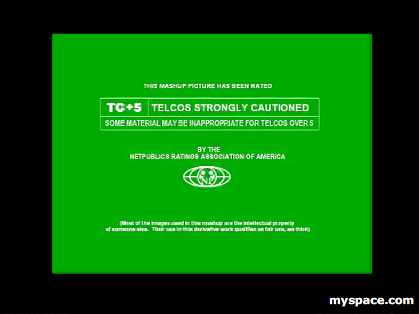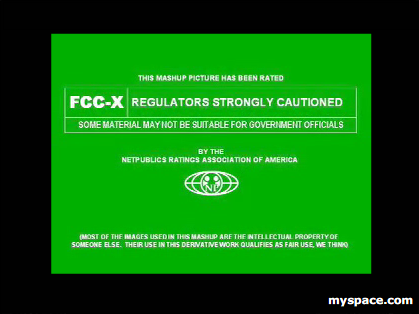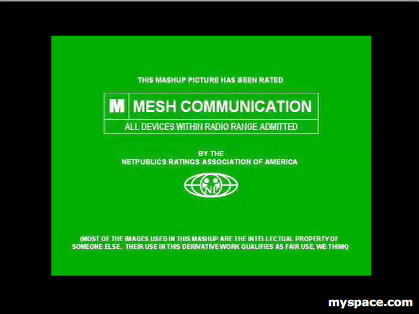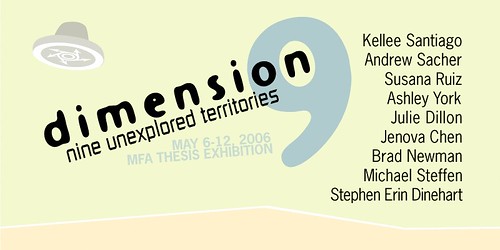[wikilike_img src=http://static.flickr.com/53/133967767_241baf4e09_m_d.jpg|align=thumb tleft|url=|caption=vegas, baby..land of the $18 buffet, which doesn’t net out well for a little guy like me|width=180]
I flew this weekend to Las Vegas, where you can get anything except decent cell service and free wifi, to attend the Digital Cinema Summit, part of the ginormous annual National Association of Broadcasters (NAB). The summit was co-sponsored by the Entertainment Technology Center at USC, which runs a digital ready theater in Hollywood and is closely associated with the School of Cinema-TV.
Motivators for Digital Cinema — Creatively Practices
Those are the business practice prime motivators, and they were discussed passionately during several of the talks. Not unsurprisingly, James Cameron’s key note talk focused much more on the creative motivators.
Cameron is passionate about the possibilities for 3D, and the really compelling 3D experiences are enabled by digital cinema. Cameron’s been playing around with this stuff, as he explained, for quite some time, including early experiments with simply slapping two cameras side-by-side to shoot stereoscopically. He’s also experimented with shooting 3D on a large selection of platforms — handheld, steadicam, helicopter, cranes — so as to prove to himself and others that, technically, 3D is entirely possible.
But, he brushed all of that aside to underscore the point that the technical instrumentalities matter little without compelling stories. He likened a fetish of the technology to the early 3D anaglyph films of yesteryear — they were horrible stories. In fact, they maybe turned audiences off of 3D, except for the hard-core enthusiasts. And hard-core enthusiasts alone do not make an audience.
His point was well taken by the audience. “We” can’t do 3D for the sake of 3D. It needs to be done to create a richer visual story experience.
[wikilike_img src=http://static.flickr.com/44/133967078_ecae71d99e_d.jpg|align=thumb tcenter|url=|caption=james cameron, creative, and john fithian, who works with the nat’l association of theater owners|width=500]
Richer Experience
Digital, by most accounts, offers the opportunity for a richer visual experience than film, but even if you argue that — as some of the alpha geeks did — it is hard to argue that it provides an impeccably consistent visual experience.
Digital doesn’t degrade the way film does. It’s digital — it’s either there, or it isn’t. After running through the gate in front of nuclear hot lamps, film degrades, perfs tear, splices are made — the film ages quickly over the course of its showing, in this regard. If you see the print at its first showing, you’ll likely be satisfied. If you see it after it’s 50th, you may notice a jerk in movement where a splice was made, or a speckled rash of scratches where a bit of dirt had its way with the celluloid.
3D experiences, as mentioned, are also a component of the richer experience. We saw a bunch of 3D clips and they’re fun. It’ll remain to be seen how 3D works in other cinematic idioms besides the action spectacular where the money shot is some hero stomping his foot on a break pedal, which makes for cool 3D. Will Nora Ephron move towards 3D? Probably not, but perhaps in a generation, 3D will become as common as color or sound and filmmakers won’t even think twice about shooting 3D. In 20 years, shooting in “2D” may be like trying to shoot using a super-8 Bolex or something.
[wikilike_img src=http://static.flickr.com/49/133968485_908060f842_d.jpg|align=thumb tcenter|url=|caption=3D ready audience|width=500]
“Enlightened self-interest”
This was a motivator that made my ears perk up. Cameron has an attitude that I think marks a visionary creative. He does what it takes to realize what he dreams and what he thinks will be neat.
Of course, he’s got a nice little chest of cash to play with. Regardless of the financial aspects, creating things that you think are cool will undoubtedly be seen as cool to other people, too.
Cameron explained that filmmakers want the stuff they need to make the stories they want to tell, without being too clutered by business models. He explained that the right attitude to have is to be driven by what you think is cool, not what you think will make lots of money, or fits neatly into present business models. Now, certainly, that’s easy for a filmmaker like Cameron to say, who has a big ball of dough with which to play, but the point was well received. Digital cinema will be resonant with audiences because of great stories with a great visual experience (not much with audio will change — not as revolutionary as the move to digital audio back when that happened with Jurassic Park.) You get audiences by having great visual stories and great visual storytellers.
“Showmanship matters — it even matters more than stadium seating and better cup holders.”
Motivators for Digital Cinema — Business Practices
Digital cinema, as presented here, addresses a number of business and creative issues. The business issues are fairly straight forward — security, distribution, and increased attendance.
Security
Obviously, piracy is an enormous concern for the the movie making enterprise. I haven’t read, nor do I intend to read, the entire digital cinema initiative specification, but one presenter mentioned that the bulk of it is composed of specifications for the security standard. Digital media can be encrypted more securely than “hard” media like shipments of film.
The media is presently MPEG encoded, although as I understand it based on some remarks, the JPEG2000 standard is the goal. When it’s transported over digital networks, the film is encrypted. Sent separately to the theater are decryption keys. By sending these two things separately, the film can only be decrypted at the theater, in the projection booth. This mitigates against someone pirating a copy, which I guess can happen with film in the print duplication phase. (Although, it seems to me that, with digital, it’s still possible to pirate at the post-production phase.)
Besides securing the actual transport of the digital film, digital projection and digital theaters also can be equipped with some mysterious technique that “jams” camcorders, another of the headaches theater owners face.
Distribution
Digital media can be transported cheaply and, eventually, quicker than hard media. It’s also cheaper, in principle, to distribute electronically, over satellite links and using fiber, than to use traditional courier mechanisms. I’ve heard numbers like $1 billion that the studios spend in costs associated with shipping hard media. (Curiously, the current operating business model for digital cinema is to charge studios a “virtual print fee” for distributing digital. Who charges this? The third parties like Access Integrated Technologies who are in place with debt financing to help theater owners install and retrofit for the expensive digital projection systems. This fee is based upon the money that studios save in shipping costs. It’s then used to help recoup the costs of installing and retrofitting for digital cinema.)
There are costs associated with digital cinema distribution, certainly. The instrumentalities for handling the data in the theater are significant. One cannot take for granted what material infrastructure, software, redundancy systems, customer service, bandwidth, etc., are needed to store 200GB of digital media. Operationally, digital cinema is a sophisticated operation after post-production. There are data centers managing satellites, racks of digital technical equipment that are so new that no one knows entirely how they may fail, etc.
As John Fithian of the North American Theater Operators Association (NATO, unfortunately) mentioned, digital is electronic, and electronic means that things break, and that things require technical expertise that does not yet exist as wide spread as will be necessary. If data that took 10s of hours to deliver for an evening screening is corrupted or a disk crashes or your redundancy system fails, you miss a screening and have turned off an entire audience to the experience.
Increase Attendance
This is the strong marketing hook for exhibitors — if you can create a better experience for an audience, you can then recapture some of the lost attendance that cinema has faced over the last years. If digital can deliver a richer visual cinematic experience, maybe people will start going back and perhaps even pay a bit more.
Biggest Take-aways, in my humble opinion
James Cameron’s keynote on the second morning was exceptional and motivational. A few of his remarks are condensed and editorialized here:
Some things won’t change about movies — they have to have a good story, great scripts, etc., no matter what the tools are. The technology doesn’t sell theater seats — you can’t market digital cinema as digital cinema by itself. Particularly with 3D, simply doing 3D is archaic — it’s like the anaglyph 3D films of decades ago. They were horrible stories. Cameron made us all chant, “Red, Blue — Bad”, which was pretty funny and mostly an inside joke amongst 3D enthusiasts. It’s okay if you don’t get it. It isn’t even one of those “you had to be there” jokes, just geek humor.
Mobile media — “Who’s going to watch Star Wars on a cell phone?”
(I have to agree, and one of the reasons I find mobile cinema rather perplexing. Watching any cinematic experience on a postage stamp sized screen just doesn’t seem fun, nor fun to develop or produce. Now, I like the idea of mobile devices as touch points for various kinds of media experiences, but a full cinema or television story? I’m waiting to be convinced that this is a valuable area of research — it’s just not interesting to me presently. And that’s partly driven by the challenges of trying to get media onto a phone. I like problems that I can at least prototype in the laboratory in my backyard shed, and don’t require networking the consent of some business people at a major cell phone service provider.
Live simulcasts — this is an interesting area of consideration, mostly for exhibitors, I believe. Having an event simulcast to theaters is one opportunity for the digital cinema ecosystem. For “private” or specialty events, like simulcast of an open heart surgery..in 3D..digital exhibition has great opportunities. But, beyond that, the opportunity is lost to the challenges of current business practices associated with licensing and rights management, most of which I’d guess are locked in through long-term relationships between the event producers and television. I’m sure TV can’t be too happy about exhibition of these things in movie theaters.
[wikilike_img src=http://static.flickr.com/46/133970842_c34c68745c_d.jpg|align=thumb tcenter|url=|caption=is broadcast feeling it’s age? what’s next?|width=375]
Broadcast?
One last thing. Although I was only here for the weekend, and the full NAB event officially starts on Monday, I got a slight sense — maybe it’s just me — that the “broadcast” part of the National Association of Broadcasters may be loosing some of its primacy to other, multivalent means of circulating media, content and experience.
I caught the signage for one of the grand events going up, and it noted the honoring of three important broadcast journalists, who no longer are in broadcast the way they once were. Many opined that their having “moved along” was an indicator of the transition point from traditional broadcast to multipoint, networked based mechanisms for circulating culture, like the Internet. NAB2006 had summits and sessions on Podcasting, MoTV (mobile TV), IPTV and other mechanisms that anticipate many-to-many distribution that fundamentally disrupt the old school broadcast model. This topic could take up an entire book. It likely will someday. I just wanted to flag this and place a gentleman’s wager that, within the next four years, NAB will change it’s name to something like the National Association of Content Circulators or the National Association of Content Creators. 😉
Why do I blog this?
Why did I go for a $700 weekend in Las Vegas? Actually, $707 if you count the $7 the slot machine took from me? I’m trying to find out more about digital cinema, mostly because I’m a digital technologist in a School of Cinema-TV. I’m not a film maker so looking at how digital technology enables new kinds of cinematic experiences hopefully gets me thinking about the future of visual story telling and what i can bring to the game. It may be nothing, but I’m used to probing a vector for a bit and testing the air. The digital cinema summit was a bit of a gamble, because sometimes these trade show sorts of things can be very “insider” focused. I’d say this particular event was about a 50/50 mix of technical minutiae that was interesting, but not 100% legible — color gamut comparisons, the importance of particular screen materials, testing platforms, distribution and encryption techniques, etc. The stuff that was interesting to me, the other 50 of the 50/50, was more about the creative possibilities of the digital cinema platform. The 3D stuff was very cool, and I like to think of that in the context of the Vis-a-Vis platform. Same goes for thinking about how the creative practice of visual story telling changes when you’re able to provide a lower barrier to entry (in principle, technically speaking — the business barriers will likely still remain) for accepting content from independents who can save the expense of printing. Overall, I’d say it was worth the trip.
Technorati Tags: digital cinema




